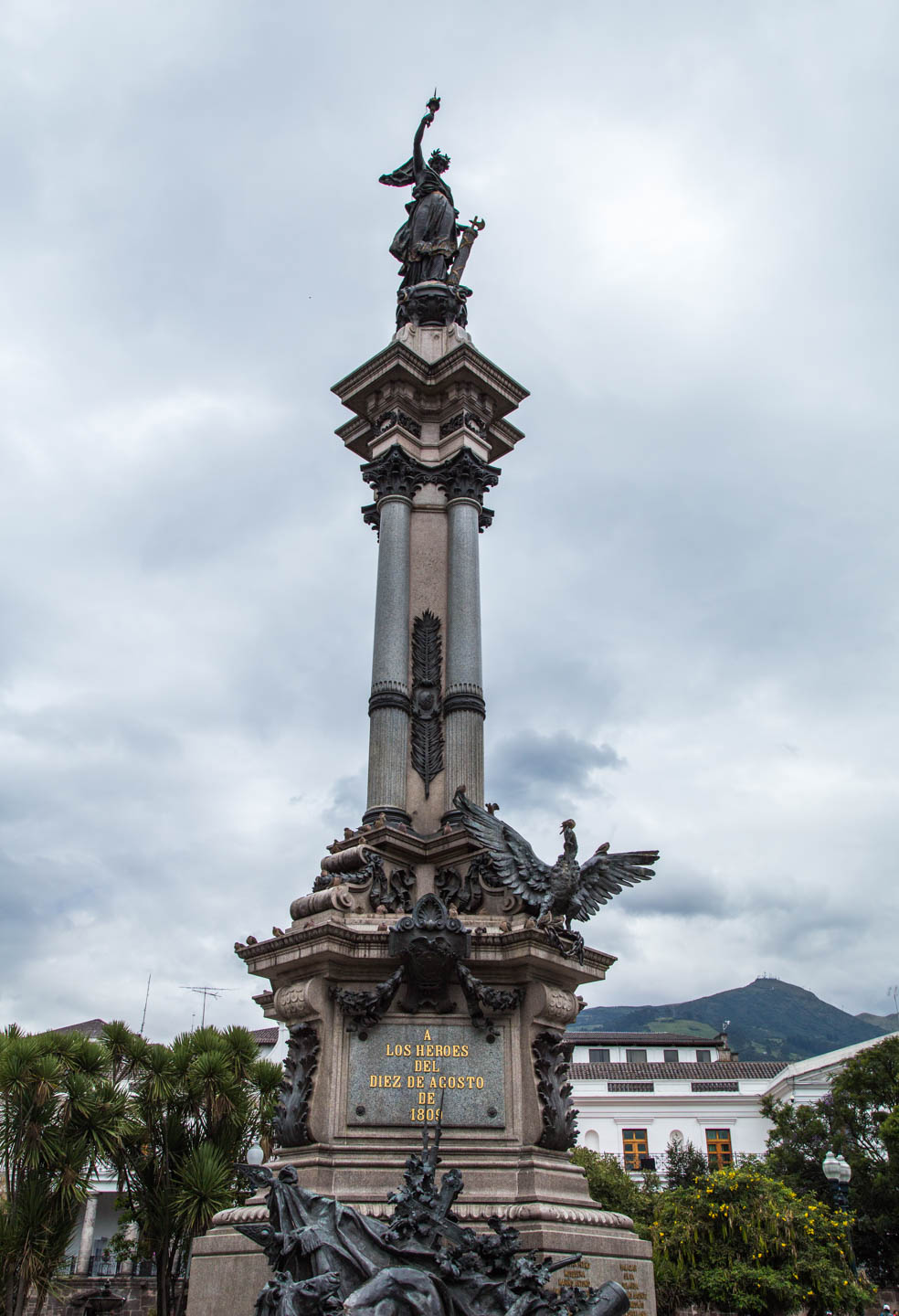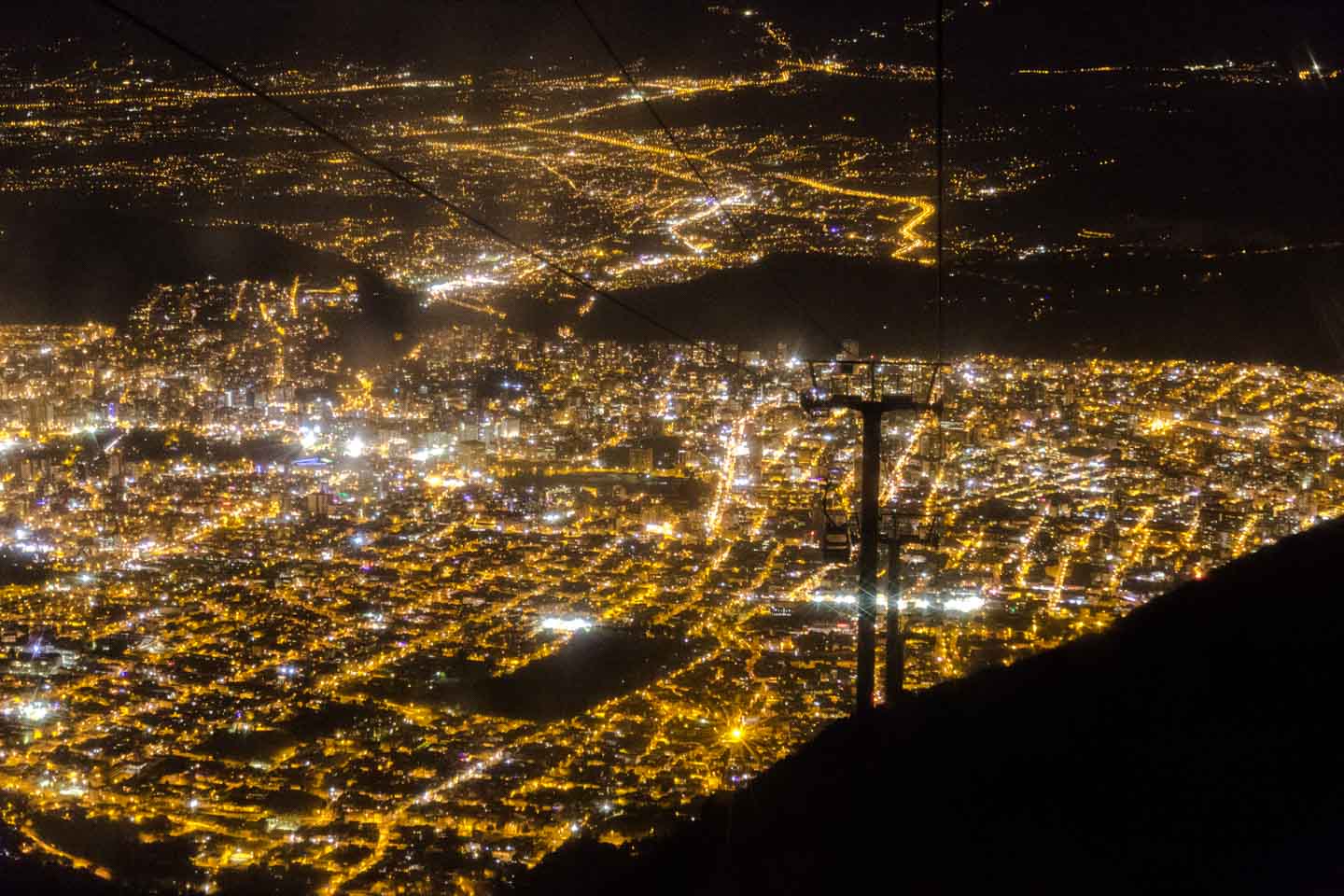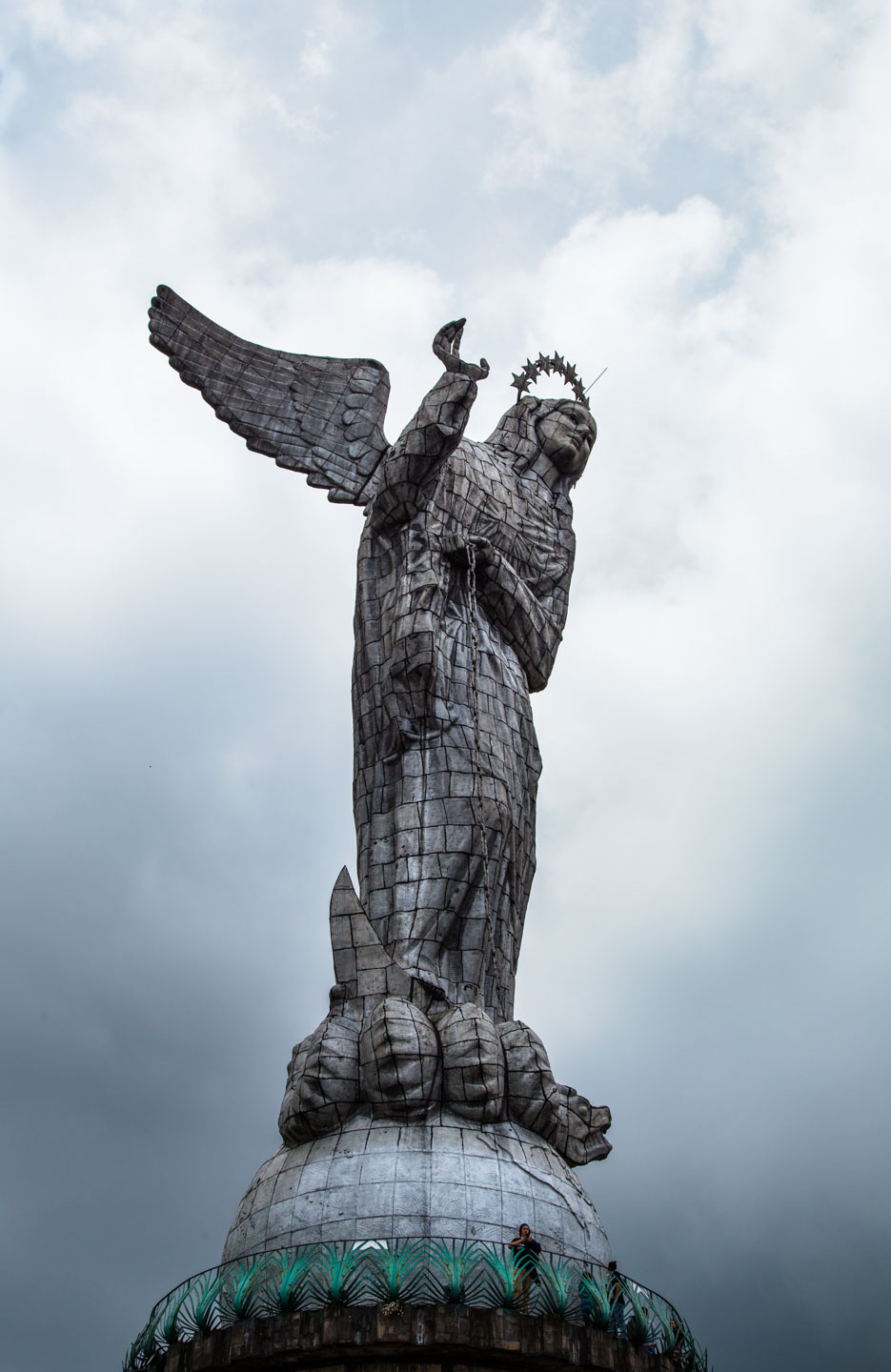While the main goal of visiting Ecuador was to go to the Galápagos Islands – one of our “Top 5” destinations – Ecuador has so much more to offer. Their tourism slogan is “All You Need Is Ecuador,” which is pretty accurate. From the Amazon forests, the impressive Andes mountains and associated highlands and volcanoes, to the beachy coast, Ecuador has it all. We did not make it to the Amazon in Ecuador (we both feel we should visit the Brazilian Amazon first), but we did stop in the capital city of Quito for a few days. And boy were we dazzled.

Quito Old Town / Historical Center
One of the first two sites to be designated a UNESCO World Heritage Site back in 1978 (along with Kraków, Poland), Quito has one of the best-preserved original historical centers. We stayed near Old Town in the San Blás neighborhood and spent most of our time when not on a tour wandering the streets of Old Town.

The entire city of Quito sprawls across the slopes and valleys of volcanoes in the Andes mountains. The result is a long, stretched patch of urbanization along all levels, low and high. Mountain roads are typical in the city, and the steepness of some roads rival that of San Francisco (coincidence that the city was previously known as San Francisco de Quito?). This is also why Quito is one of the highest cities in the world, at 2,818m (9,245 feet) in altitude.

Old Town is in the original river basin Quito began, surrounded by foothills and highlands and volcano peaks. Buildings in the Old Town have colonial architecture with courtyards, filling narrow streets lined with vendors. It was very charming and unique. Many churches are present in Old Town, all original and beautifully ornate. Basílica del Voto Nacional is an iconic one, though there are many others – Church of Santo Domingo, Church of La Compañía de Jesús, etc.

There were also many plazas dotting Old Town. The main one, Plaza Grande, is Independence Square and the prettiest one. In the center is the monument to the independence heroes of August 10, 1809, when independence from Spanish monarchy was declared. Around Plaza Grande are some important buildings, such as the Carondelet Palace, the house and office of the Presidents of Ecuador.

It’s hard to capture all that Quito Old Town is in detail, but it has a special atmosphere. Truly the heart of Quito.
TeleferiQo
Portmanteau of “teleferico” and “Quito,” TeleferiQo is a gondola lift up the west side of the city on volcano Pichincha. The ride is roughly 20 minutes, with a distance of 2237 linear meters and a peak of 3,945m (12,943 ft), one of the highest gondolas in the world. The view was pretty incredible the entire ride, not just at the top, especially watching the buildings in Quito get smaller and smaller.

For these types of aerial attractions overlooking a city, we always like to go a bit before sunset, then stay through sunset, dusk, until the city lights up for the night. We did something similar in Hong Kong, as well as Taipei atop Taipei 101 and felt like we got to see the full range of scenery. The TeleferiQo experience ranks pretty high with the other ones.

The sunset at the top of TeleferiQo was beautiful. Not only the typical colors in the sky, but also clouds moving into the mountains. Since the city has many levels, different sections were in the light vs. the shade at varying times. The effect was pretty remarkable and something we had not seen before.

Oftentimes the best views are at night, and this was also the case here. It’s kind of magical to see a city slowly light up – first the main squares and streets, then other buildings and businesses, until everything else turns dark and all there is are dots and strings of lights.

On the way down the gondola, even though we had a private cabin, we both just sat quietly and admired the view. It feels a bit like an out-of-body experience, like we were observing on human civilization and everything that the human race has created laid out in front of us. Here were some three million people going about their lives – succeeding and failing and everything in between. What does that say about life and existence? I had no answers, though it was certainly very thought-provoking and profound.

Mitad del Mundo / Middle of the World
Ecuador literally means “equator” in Spanish – the country is located right at the equator. To commemorate this and what was known as geodesic missions conducted in the 18th-century to measure how round the Earth is, a Monument to the Equator was built on the Mitad del Mundo grounds.
The actual site of the monument and the yellow line is not exactly at latitude 0, which modern GPS confirmed after the fact. The actual equator lies about 240m (0.15 miles) north of the yellow line. Nonetheless the meaning is there, even if it may not be 100% precise.

As we approached the monument to take a picture together, it struck me as fittingly symbolic for us. Julie grew up in the northern hemisphere, while Carlos grew up in the southern hemisphere. Here we meet at the equator, straddling the equatorial line separating north and south, standing from our respective “sides,” but also partially across the line, holding each other. We have always met each other halfway and hope to continue to do so in the future.
El Panecillo
Separating central Quito from southern Quito, El Panecillo is a hill approximately 3,000m above sea level, with the “Virgen de Quito” standing at the top, looking down upon the city.

El Panecillo is not as high as TeleferiQo, but provided a different perspective. While we couldn’t see as far, we were able to look down upon Old Town closely while still looking up to the hills.

We really enjoyed the few days we stayed in Quito, both for the day tours to Cotopaxi and Quilotoa, as well as the city itself. From here we head to Peru!

